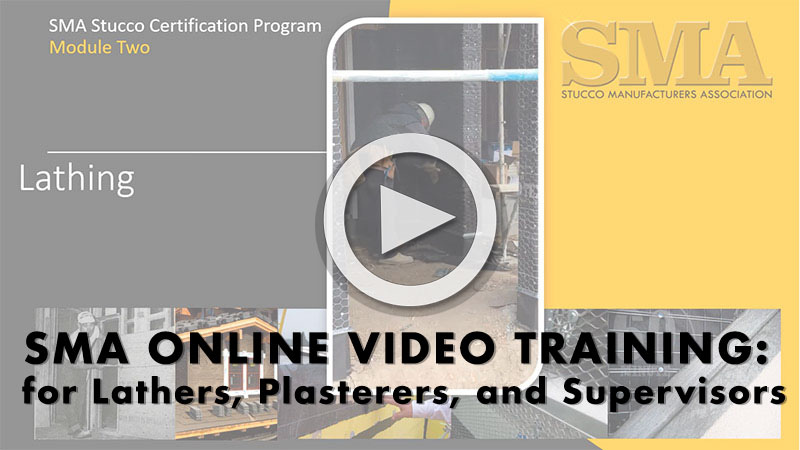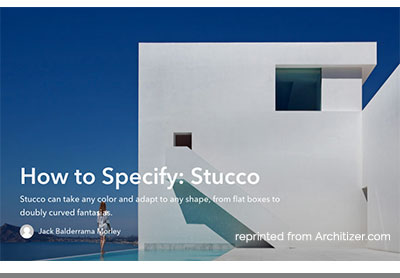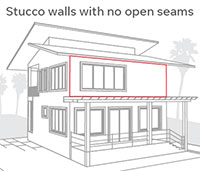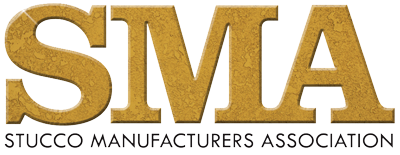FROM THE EXECUTIVE DIRECTOR: Cement plaster is the best cladding — or the worst

Mark Fowler, SMA Executive Director
After doing decades of architectural presentations on stucco, I came to the realization that cement plaster was the best cladding and owner can put on a building, I also realized it could be the worst. I would frequently start my architectural presentations with this sentence. This confusing statement is true due to the stout nature of the cement membrane over a lath. The stucco membrane cladding is classified as an air barrier when applied to a minimum 5/8 inch thickness per the International Energy Conservation Code under assemblies and materials. In addition, when properly mixed and applied, the membrane is highly water resistant. This makes cement stucco an incredible cladding in resisting the passage of air and moisture. This further explains why it can be so good or so bad.
Problems occur when flashings at terminations or penetrations are missing or incorrectly installed. They can allow water entry behind the membrane. The cement plaster is applied over a building paper and as the paper wrinkles from being wet, shallow channels are formed. The paper dries and shrinks back leaving a small drainage plane. Another favorite remark I would make is that this is like a country road. It can handle some traffic, but not the heavy traffic of the Interstates. Water will be absorbed into the cement and even travel down. This system can only handle so much, thus the term incidental moisture. Rain screen was born to make a bigger highway. This is acceptable, but it is typically far less expensive to minimize water entry. Remember, this is not a barrier assembly, so 100% water proofing is not required. When proper water management is achieved, the cement cladding is virtually impervious and superior to other cladding materials. This explains why people all over the USA can report on stucco buildings over fifty years old with little to no problems. Stucco has history, a great history. Done wrong, excess water gets in and overwhelms the moisture management design and problems can occur. Stucco can work as well in the southwest as it does in the rain or in the cold. There are some great homes in Chicago, New York and Minneapolis with stucco that were done almost a hundred years ago still servicing as a great cladding. A good stucco job is really not that hard to achieve, you need two things.
- Good details
- Proper installation
DETAILS: The industry has generally failed to produce or accept a series of generic basic details for stucco. This is even more noticeable with Continuous Insulation becoming increasingly popular. Details should not be overly complex. Complexity adds unnecessary cost and confusion. Confusion leads to conflict and delays. In addition, the detail is truly reliant on the last person in the chain, the guy putting it in. Complexity at this level is recipe for disaster.
INSTALLATION: A good installer is the key. Do not be fooled by size. Just because an architect is from a large firm or the contractor is a big name means very little with regard to real skill and knowledge. Some of the smaller design firms do the best detailing, and specialty plastering contractors are generally the better stucco installers. Both these groups know that stucco requires more attention to flashing than most other cladding materials. If the building paper or house wrap is installed incorrectly or reverse lapped, problems are sure to occur. Reverse laps are one of the prime causes of water intrusion. Experience in knowing what to look for is the key to success, not the size of the company or how many employees, trucks or offices they have.
PLEASE NOTE: SMA OFFICE CONTACT INFORMATION
Mark Fowler, Executive Director
Marlene Lampert, Office Manager
Stucco Manufacturers Association
5753 E Santa Ana Cyn Rd, Suite G-156
Anaheim, CA 92807
Office: 213 379 5890
Mark@stuccomfgassoc.com
Marlene@stuccomfgassoc.com
RECORD GOLF TOURNAMENT
The annual SMA Golf Tournament was held at Strawberry Farms in Irvine with record attendance. The weather was perfect as the crowd enjoyed a great networking day. The discussion on stucco issues including sand, market share and ways to improve the industry continued from the membership meeting that was held just the day before.
The day started with three player play-off for the putting tournament. Steve Grant, Mike Miaette and Jose Ibara all scored a 5 during regular play. In a sudden death and closest to the pin, each player had to putt to a new hole with backs turned so they had no idea of the break or how the competitors did. Jose Ibara just edged out Steve and Mike.
All the proceeds on the putting tournament go to Wounded Warrior Home Foundation. This group is accredited by the Patriot Initiative as fully transparent in helping returning wounded Vets who are essentially homeless. This new group has limited resources and hopes to expand into actual construction projects someday. Visit them at www.woundedwarrierhomes.org and help the SMA be a more proactive partner.
The scramble format allowed for some very low scores. Second place was won with a score of 57 by the team of Victor Cronkite, TJ Gillen, Max Carreon and Jack Mardiros. The winning score was a blistering 53 shot by the team of Eric Shimp, Jonathan Shimp, Tyler Miller and Jared Miller. Long Drive was won by Jeff Swanson, Closest to the Pin was Rui Bronze and John Calicchio.

SAVE THE DATE — NEXT SMA MEETING ON NOVEMBER 16

The next SMA membership meeting will be held on November 16 at Antonello’s in Santa Ana and present “Continuous Insulation, the Energy Code and Stucco.”
The new Title 24 laws are changing before our very eyes. Being up-to-date will provide opportunities for some and trouble for others. You can decide your future only by knowing the rule. Our Speaker is Mr. Nick Brown, an expert on Title 24 issues — and he knows stucco. He will cover what was, what is and what will likely be our future. Designers and even contractors may have options to be compliant with the code. You do not want to miss this informative program. Space is limited, so book now.
FEATURE ARTICLES
CODE ADOPTS RIGID FOAM
The Continuous Insulation (CI) issue is not going away. While some plastering contractors may wish CI to go away, it won’t. Energy is not getting cheaper, we need better insulation and while most cities can elect to mandate compliance to the Energy Code, that just got easier to do.
Most code authorities had concerns about putting stucco over rigid foam. A lack of direction on secure attachment, how much rigid foam, and could stucco over foam be code compliant were unaddressed issues. It is not the building department’s job or even their desire to design your building. They are laser focused on public/safety and site inspections of all things related to public safety. This would include fire ratings, structural loads and the attachment of claddings. When rigid foam became increasingly popular, they were naturally hesitant. The new 2016 code will change all that.
Chapter 7 of the IRC now includes table R 703.15.1. These tables cover the installation of exterior rigid foam, the maximum allowable thickness, and the fastener spacing for the weight of the cladding selected. The weight of claddings is broken into three groups, 3 psf, 11psf and 25 psf. Three-coat cement stucco is assumed to weigh 11 psf. This effectively ends the debate of whether stucco over foam is code compliant. It is prescriptively listed in the upcoming code. The stucco industry needs to embrace this new direction with less complication and lead the way to better buildings. One-coat or three-coat stucco can be done over rigid foam, both are fully code approved.
PUMPING PLASTER
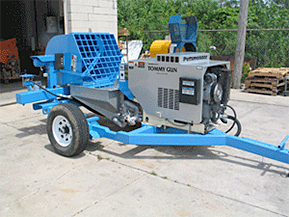
The machine application of cement plaster is key to increased production. Even Paul Bunyon could not keep up with machines. Today we have a host of plaster pumps available. In the Southwest, most use a four-cylinder gas or diesel piston-style to pump cement plaster basecoat. These machines are large, loud and pump a massive amount of material. They are also expensive — there are many new cars that are cheaper. They pay for themselves, though, in the volume and production of plaster pumped per day. Some large crews will routinely pump up to 50 tons of plaster in eight hours. This can translate to over 20,000 square feet of plaster on the wall. The downside is these machines need volumes of work to keep running.
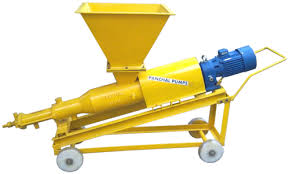
The tract-home market of the southwest fits this machine perfectly. These machines also need large crews. The crews must work together. Unlike drywall hangers that can work alone, this machine requires a group of skilled plasterers and hod carriers. Each knows what his job is and what the guy next to him is doing and why — similar to NFL offensive line. As a team, they can do amazing amounts of work. With no teamwork or bad leadership, they are a waste of time and money. Again like the offensive line in football, the more they work together under proper coaching, the better they get.
IT IS JUST SAND
Many architects and builders think sand is sand. To the experienced plastering contractor, sand is critical to a good stucco job. The first fact is sand makes up abut 70% of the volume of the prepared material to apply. 70% of anything should be looked at carefully and not taken for granted. Yet many people simply look at it as just sand, some even comment it is just plaster sand, what’s the big deal?
THE FINISH COAT: The finish coat of stucco is typically applied to achieve a desired texture or appearance. Cement or acrylic finishes require close attention to sand sizing. Sizing of sand is done through sieves and called gradation. It should not be surprising to learn fine sand sizes produce more delicate textures. Most common is a 20/30 sand. Large sand sizes result in more coarse finishes. These are generally a 16/20 size. Issues with finish coat sands are not very common, which may be a reason many look past the issue. Most finish stucco material for plaster use is with a manufactured sand pre-blended in the bag. This mix is closely monitored at the factory and precisely measured as it is bagged and then shipped. The result is good, clean and well-graded sand for the plasterer to use. Mistakes can happen when the contractor selects the wrong product or decides to blend it himself.
THE BASECOAT: The basecoat of cement plaster is where the use of aggregates becomes a much bigger issue. The availability of washed plaster sand is becoming scarce in many regions of the country. Even if good sand is available, there is a cost and in extreme downward pricing markets, some contractors will use bad sand to save a few dollars. As the volume of cement plaster basecoat is 70% sand, selection of sand quality is critical. The three prime characteristics that should be looked at for basecoat plaster sand are:
GRADATION, SHAPE AND CLEANLINESS
These characteristics will greatly determine and affect the workability, shrinkage, porosity and durability of the stucco basecoat. The ASTM for basecoat aggregates is C-897 and the charts for US standard sieve sizing and percent retained by weight and related ASTM test data are good information, but can be overload for contractors and architects.
Gradation: The size of the sand particles is important. A good plaster basecoat mix should have a good variation of sizes of sand. The reason is that when placed and compacted, the various sizes will fit tighter together and have less voids. Voids should be limited as they are filled with cement and lime paste. It is the cement and lime that shrinks as the plaster cures.
Why not use all fines to eliminate voids? The answer is that fines have very little strength. It would be like concrete without the rocks. The plaster membrane would be weaker and lessen the ability to resist stresses imposed upon it.
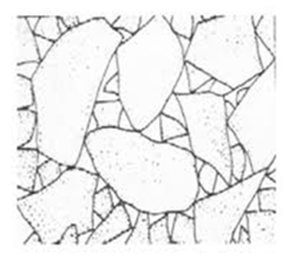
Shape: Sand shape for basecoat plaster is preferred to be somewhat angular for basecoat plaster. This further minimizes the voids and adds strength.
Cleaniness: This is the most overlooked, neglected and important characteristic of basecoat plaster mixing. Sand that has a lot of dirt and clay absorb more mix water. This results in excessive shrinkage as the plaster cures. The reason for a prolific use of sand with clay or dirt — it is easier to pump and very workable. It is also less expensive than washed plaster sand. In some cases washed plaster sand can cost twice as much as unwashed plaster sand. While this may not seem significant on a single mixer batch of plaster, it is when crews can use as much as 50 tons a day.
The issue of basecoat plaster with clean sand is a challenge. Dirty sand makes pumping much easier. The dirt or clay acts as a lubricant. The incentive to use dirty sand is all too tempting to many contractors.
It is recommended to specify a basecoat sand for cement plaster that complies with ASTM C 897. For project managers, there is a reasonable chance you will hear from your plastering contractor that he is unable to obtain a certificate of compliance with C 897. Some regions of the country have serious issues complying with C 897. The code and standard authorities have had this issue for decades and have provided a solution. In ASTM C 897 there is a provision under Physical Properties.
The aggregates failing to meet the gradation requirements shall be accepted if there is evidence that plasters of comparable properties made from similar aggregates from the same source and exposed to weathering similar to that to be encountered for a period of not less than five years without appreciable disintegration.
CONCLUSION: For those that want good basecoat stucco, get an ASTM certificate or letter confirming the above language. While sizing and gradation are important, the cleanliness of the sand is critical. Pre-blended products with sand, bags and silos are generally very good sand quality mixes and meet C-897. Finish coat plaster products are recommended to be blended by a manufacture for best results. The accuracy of sand particle size and percentage of sand used with cement paste is critical to the final appearance of the texture desired.
THE FIRE RESISTANCE OF PORTLAND CEMENT PLASTER
Cement plaster (stucco) has been listed as a protective membrane in all code tables since codes were incepted. Cement plaster, including lath and the water-reistant barries are considered “non combustible” and suitable all types of construction, including Type I, the most restrictive by fire codes.
ONE HOUR RATING:
7/8 inch thickness cement plaster has been tested and proven to provide a one-hour fire membrane over all vertical framed partitions when the following conditions have been met:
Walls:
- Wood studs must be a nominal size not less than a 2×4
- Metal studs must be a minimum 20 guage ( 33 mils)
- All studs must not exceed 24 inches on center spacing
- Maximum Deflection Criteria should be L/360
Ceilings of lath and plaster to qualify for one hour fire rating membrane require:
- Wood joists must be a nominal size not less than 2×8
- Wood joists shall not exceed 16 inches o.c. spacing
- The lath shall be approved for soffit or ceiling applications
- Suspended lath and plaster ceilings comply with ASTM C1063
In all cases the attachment of the lath must be secure to framing or furring members and capable to support a minimum 11 psf with a safety factor of 6.5.
I CAN’T FIND A TEST!
It is virtually impossible and certainly impractical to test every possible assembly configuration for fire resistance. Fortunately, that is not always necessary. While the SMA always encourages the use of tested assemblies to insure compliance, the use of Hermathy’s Ten Rules of fire ratings have been documented by HUD, EPA, FEMA and available on the ICC SAFE website. Final approval is always by the local Building Official.
The ten rules should be reviewed carefully by experts on fire-resistivity and the construction involved with the application of the particular rule. The following is only brief synapsis of each fire rule:
- The sum of materials is greater in protection than individual parallel layers
- Fire endurance does not decrease with adding layers
- Air gaps will generally improve fire resistance
- The farther the air gap from the exposed surface, improves fire endurance
- Fire endurance is not increased by a wider air gap
- Materials with low thermal conductivity are best on the fire side
- Asymmetrical construction depends on the direction of the heat flow
- Moisture increases fire resistance
- Load supporting elements yield higher fire resistance
- Load supporting elements may be replaced with non load bearing elements of equal endurance
The rules of fire endurance each have special conditions to adhere to, limitations and require good engineering principles be applied. Architects and contractors can get approval from a group/expert or entity that understands how Hermathy’s rules are used, options for archaic, and unusual fire assemblies may be presented. The architect of record is the first person to approve the use of the rule, and final approval is from the local Building Official. The SMA has been involved with this process with plaster as many older structures have plaster in some form or another. Retrofitting does not mean known fire resistant materials have to be discarded simply because it is part of a non-tested assembly. The SMA has found that most building officials are agreeable to proper interpretation of Hermathy’s rules with substantiation of ratings and with sound engineering principles.

